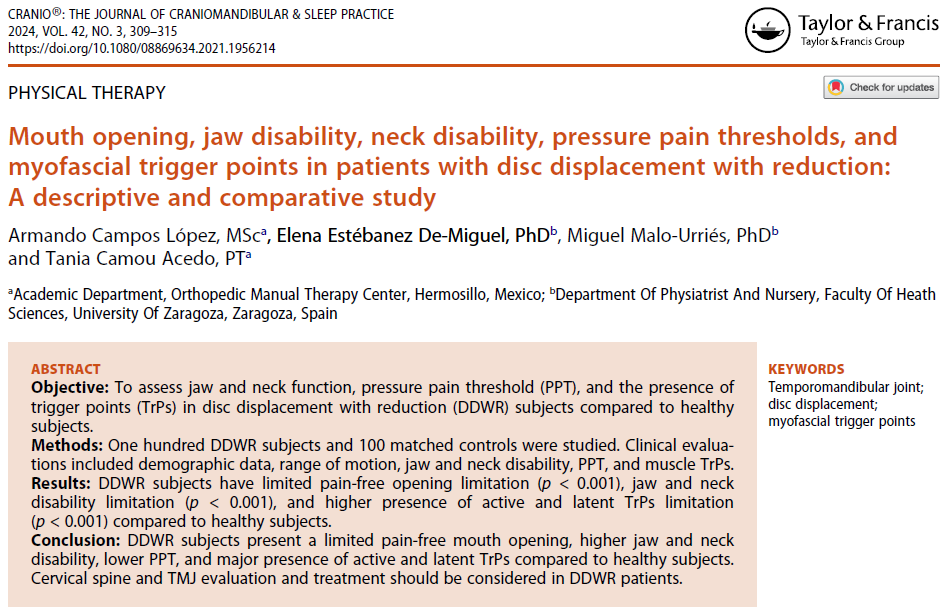Currently, orthopaedic mechanistic approaches for treating disc displacement and other TMJ disorders are amply criticized, and disc repositioning is deemed unnecessary. However, CRANIO published an article by López et al 2024, https://doi.org/10.1080/08869634.2021.1956214, showing that patients with bilateral DDwR (n = 100) present with increased painful mouth opening, lower threshold for pressure pain on masticatory and neck muscles, and impaired masticatory, verbal and mobility functions with respect to control subjects (n = 100).
These findings emphasize the need for comprehensive, patient specific diagnosis, and appropriate definitive TMJ treatment aimed at re-establishing or at least improving the function of the TMJ and the stomatognathic system.
Evidence of the clinical validity of controlled mandibular repositioning was recently provided in Singh et al 2024 https://www.ncbi.nlm.nih.gov/pmc/articles/PMC10969670/, confirming the findings of clinical research published in the last decades by authors, such as J Gibbs, H Lundth, HC Simmons, JD Summer, P-L Westesson, among the others.

